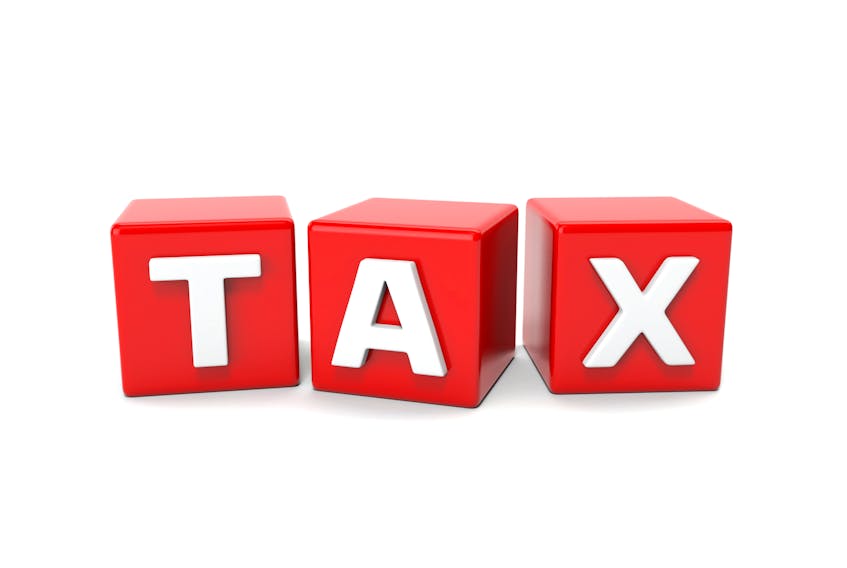
Canada’s tax system is sexist.
And it’s likely to stay that way as there has been little interest in fixing it.
For more than three decades, tax debate in Canada has been a somewhat singular discussion: taxes are bad and must be cut.
Those on the tax fairness side of things have had a steep hill to climb in order to get their arguments to gain traction.
With the exception of a few feminist voices, little attention has been paid to the gender impact of those billions of dollars in tax cuts.
But take note, Canadian men have been making out like bandits, especially high-earning men.
The “no tax on tampons” campaign exposed one element of our sexist tax laws with women paying taxes on essential items like tampons, while Viagra and wedding cakes were tax-free. Canadian women paid $17 million a year in taxes on menstrual hygiene products until the government dropped the tax in 2015 after a long and sustained campaign.
To be clear, sexist tax issues are much bigger than the tax on tampons. The tampon tax was glaringly sexist. Others examples are hidden in the tax code and require more in-depth analysis such as that provided by experts like Kathleen Lahey, a Queen’s University law professor who has argued for quite some time that taxes, tax breaks and tax policy are far from gender neutral.
Except for a few feminist voices, like Lahey’s, the tax debate has raged on without much concern about the gender impact of billions and billions of dollars in tax decisions.
Lahey though has steadfastly pointed out the problems with Canada’s tax system, loopholes and tax breaks. Her tax and gender analysis is extensive.
In one case, she analyzed tax cuts between 1997 and 2016 and found that the vast majority of the tax cuts benefited men, specifically higher-earning men.
In total, the tax cuts resulted in a “revenue hole” in 2016 of about $94.4 billion.
The single largest source of the tax cuts came about because of changes to the federal personal income tax (PIT) system. They accounted for $52.3 billion of the $94.4 billion revenue hole, according to Lahey.
More than 50 per cent of the 1997-2016 federal PIT tax cuts went to those in the two highest income deciles. In contrast, the two lowest income deciles together receive only two per cent of that $52.3 billion.
Lahey notes that overall, women receive just under one-third of the PIT cut, while men received slightly more than two-thirds of it. That means men’s share of $35.4 billion is more than double women’s $16.9 billion share.
Why should we care?
Because these kind of tax cuts exacerbate inequality between the genders. And if we are to ever close the gender income gap, what we do with taxes is an important piece of the puzzle. In other words as the group Canadians for Tax Fairness recently pointed out, advancing equality for women requires tax fairness.
The federal Liberal government has said gender budgeting is now the new normal.
Next week we will see how or if that gets delivered when Finance Minister Bill Morneau brings down the 2019 federal budget.
According to Oxfam’s 2019 Feminist Report Card, Canada deserves credit for making progress with respect to addressing the gender gap, but the organization notes our tax system needs an overhaull. It’s sexist.
“A progressive tax system is key to tackling economic inequality, closing the gender gap and raising more revenue for public services. The government cannot deliver on its feminist agenda without adequate financial resourcing. More investments will require more resources, which is why effective and gender-equal tax policy must be a priority in order for the government to deliver on the its ambitious agenda.”
Just in time for International Women’s Day, March 8, the Canadian Centre for Policy Alternatives released a research paper, supporting Lahey’s many years of analysis on our tax system: it favours men.
The report by CCPA economist David MacDonald, notes that if the current tax and transfers system produces inequality, it can also be a potential lever for reducing it.
The report examined 45 federal tax expenditures—tax deductions, credits, breaks and loopholes—currently going to men compared to women. It did the same for several important transfer programs and then compared the gender distribution of both tax expenditures and transfers.
Only eight of the 45 tax expenditures included in the CCPA study pay out greater amounts to women than men, while federal transfer programs are slightly more beneficial to women.
The report notes a few recommendations for reforming Canada’s tax and transfer system to make them more equitable, but says that the findings point to “the need for a much larger government review of Canada’s many expensive and ineffective tax expenditures” and loopholes.
Lahey notes that a lack of affordable childcare remains one of Canada’s biggest barriers to economic fairness, adding that we have the worst childcare support systems in the OECD.
As the federal government prepares to deliver its last budget before the election, feminists will be watching to see how the promise of a gender analysis translates into real gains for women.
Lana Payne is the Atlantic director for Unifor. She can be reached by email at [email protected]. Twitter: @lanampayne Her column returns in two weeks.
Previous column:









